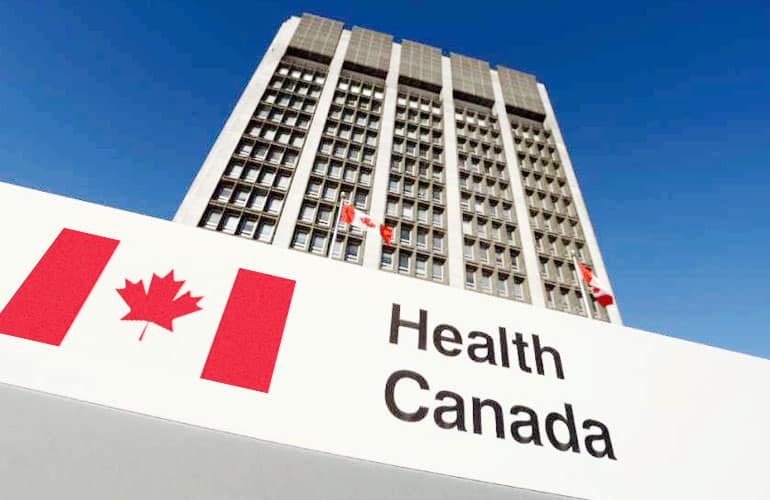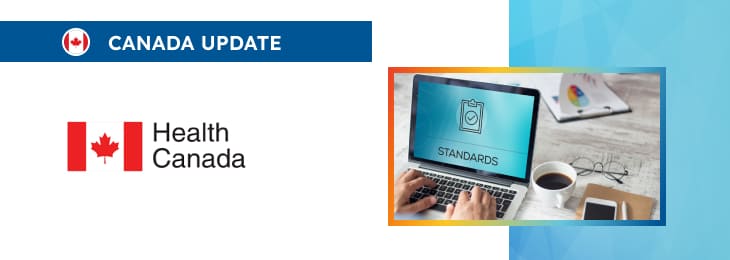The new article explains further the way the approach described in the document should be implemented.

Table of content
Health Canada, a country’s regulating authority in the sphere of medical devices, has published a draft guidance document dedicated to using standards to support compliance with the Medical Devices Regulations. Once finalised, the document will provide an overview of the applicable regulatory requirements, as well as additional clarifications and recommendations to be taken into consideration by medical device manufacturers and other parties involved in order to ensure compliance.
At the same time, provisions on the guidance are non-binding in their legal nature, nor are they intended to introduce new rules or impose new obligations. Moreover, the authority reserves the right to make changes to the guidance and recommendations provided therein, should such changes be reasonably necessary to reflect corresponding amendments to the underlying legislation.
In particular, the present guidance provides crucial information for manufacturers on effectively using recognized standards to demonstrate compliance with the Medical Devices Regulations. The guidance outlines procedures for utilizing these standards, the process for Declaration of Conformity, and how manufacturers should handle situations when recognized standards do not fully address the safety and effectiveness of their medical devices.
Procedures for Using Recognized Standards
According to the document, Health Canada recognizes certain standards as appropriately supporting specific aspects of safety or effectiveness for medical devices. These standards are cataloged in the List of Recognized Standards for Medical Devices, which Health Canada updates periodically.
In some cases, only parts of a recognized standard may be required under the regulations, or certain sections might not align with Canadian legislation. In such instances, Health Canada limits the recognition of the standard to its relevant parts.
While conformance to recognized standards is voluntary for manufacturers, those who choose not to adhere to these standards must demonstrate compliance in another way. If a manufacturer opts to meet an equivalent or superior standard or provide alternate evidence of safety or effectiveness, detailed information must be submitted with the application.
This information should include comparisons and justifications, especially if using an older, unrecognized version of a standard. For manufacturers using recognized standards, a Declaration of Conformity is required.
This form must be submitted to demonstrate that the device meets the relevant safety, effectiveness, or labeling requirements under the regulations.

Declaration of Conformity and Licensing
As explained by the authority, the Declaration of Conformity allows manufacturers to show compliance with recognized standards in support of obtaining various medical device licenses and authorizations. These include licenses for Class II, III, and IV devices, as well as authorizations for special access, custom-made devices, investigational testing, and urgent public health needs.
Manufacturers must retain all relevant records for at least two years after obtaining a license or authorization, or for the expected life of the device, whichever is longer. These records should include actual test data and other evidence demonstrating compliance with recognized standards.
If Health Canada ceases to recognize a specific standard, conformance with that standard will no longer be sufficient for new licenses or authorizations. However, licenses and authorizations issued under the old standard remain valid.
Manufacturers should adhere to the guidance provided in the “General” section for such situations. The Declaration of Conformity must include detailed information about the recognized standards met, including the edition and any deviations or adaptations made.
It should also list any third-party laboratories or certification bodies involved in testing, as well as any differences between the tested device and the marketed product.
Handling Information Beyond Recognized Standards
In some cases, recognized standards may not cover all aspects necessary to determine a device’s safety and effectiveness. For instance, additional clinical or non-clinical testing data might be required for Class III or IV devices that go beyond the scope of recognized standards.
Manufacturers must ensure that their applications provide all the necessary information to support regulatory approval, even if it is not explicitly covered by recognized standards.
Version Recognition and Transition Periods for Standards
Health Canada recognizes the latest versions of standards that do not specify an edition or year. When a new version of a standard is published, both the new and previous versions are recognized for a three-year transition period.
If the latest version includes a specified transition period, it takes precedence over the three-year period unless otherwise noted in the List of Recognized Standards. For standards listed with a specific edition or year, only that version is recognized.
Newer versions are not automatically accepted unless explicitly stated. In cases where a new version does not adequately support compliance, or contains critical new information, Health Canada may require conformance to the latest version without a transition period.
Manufacturers must clearly identify the version of the standard used in their applications and Declaration of Conformity Forms. The date of application submission determines which edition of the standard is recognized.
General Notes on Guidance Documents
Under the general rule, guidance documents issued by Health Canada serve as administrative tools to help industry and healthcare professionals understand how to comply with statutes and regulations. They also assist Health Canada staff in ensuring that regulatory mandates and objectives are met consistently and fairly.
These documents are not legally binding but offer flexibility in how their principles and practices are applied. Alternate approaches may be acceptable if they are justified and discussed in advance with the relevant program area.
Health Canada reserves the right to request additional information or set conditions not specified in the guidance to adequately assess the safety, efficacy, or quality of therapeutic products. This guidance should be used in conjunction with the relevant sections of the Medical Devices Regulations and other applicable guidance documents to ensure comprehensive compliance.
Conclusion
In summary, the present guidance on the use of recognized standards in the Medical Devices Regulations provides manufacturers with a structured approach to demonstrating compliance. The guidance also emphasizes the importance of maintaining up-to-date records, understanding the implications of standard version changes, and ensuring that all regulatory requirements are thoroughly addressed in device applications.
How Can RegDesk Help?
RegDesk is an AI-powered Regulatory Information Management System (RIMS) designed to simplify global compliance for medical device companies. With regulatory intelligence covering 120+ markets, RegDesk helps you prepare and publish global submissions, manage standards, conduct impact assessments, and stay ahead of regulatory changes all from a single, centralized platform. Expanding into new markets has never been easier.

